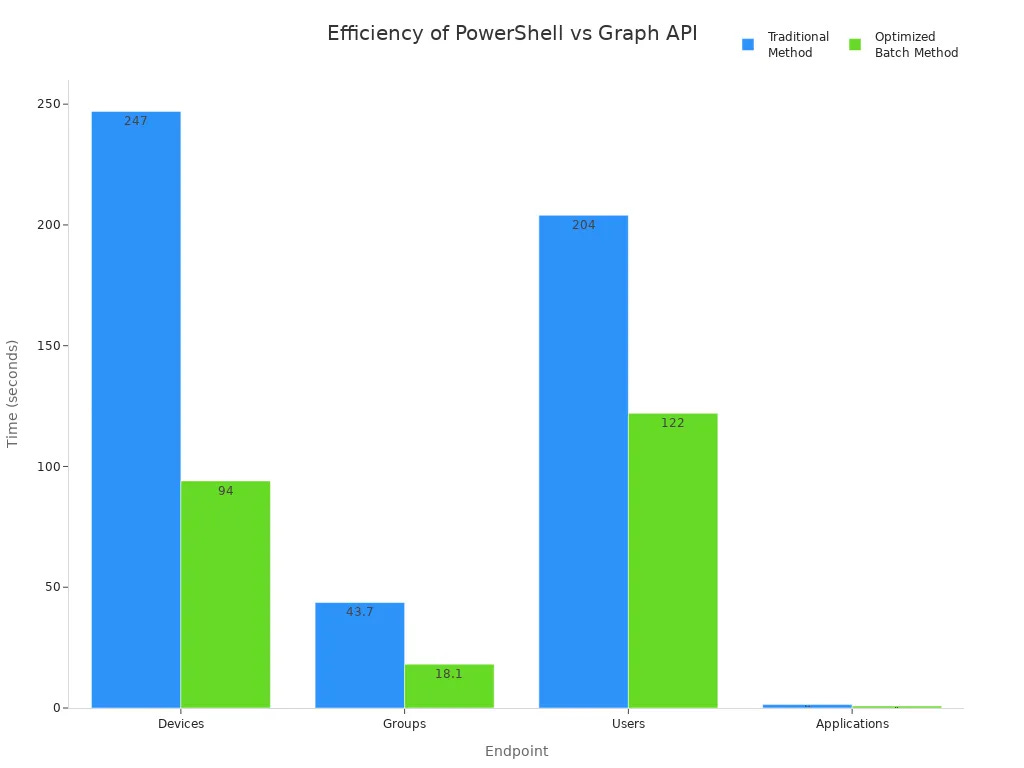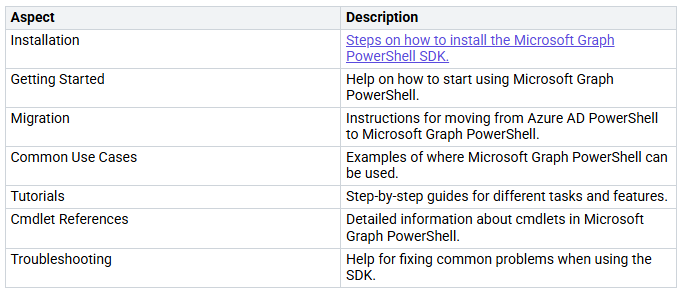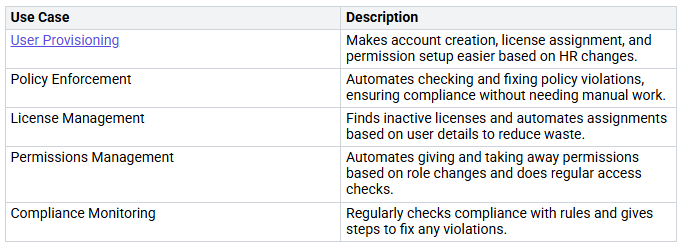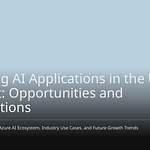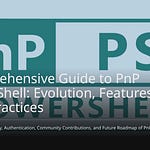Automation is very important in Microsoft 365 Automation. It makes tasks easier and helps administrators work better. When you think about automating admin tasks in Microsoft 365 Automation, you might ask which tool is better: PowerShell or Graph API? To choose, think about different factors. These include how well it works, what it covers, how fast it is, and how easy it is to get data. Each of these factors affects how well you can automate tasks and help your organization.
Key Takeaways
PowerShell is good for fast tasks in Microsoft 365 automation. It helps you manage users and licenses easily.
Graph API is better for complicated automation. It connects many Microsoft services and works well with large data.
Pick PowerShell for quick needs and simple tasks. Use Graph API for long-term plans and bigger workflows.
Both tools can work together. Use PowerShell for quick fixes and Graph API for larger automation projects.
Knowing the strengths of each tool helps you make your Microsoft 365 experience better and automate tasks well.
PowerShell Overview
PowerShell is a strong scripting language and command-line tool for system management. It is very important for Microsoft 365 automation. It helps you manage and automate tasks easily.
PowerShell Features
PowerShell has many main features that help you automate tasks in Microsoft 365. Here’s a list of its key features:
These features help you do many admin tasks easily.
PowerShell Advantages
Using PowerShell for Microsoft 365 automation has many benefits:
Deeper Configurations: PowerShell lets you make deeper settings that you can’t do in the Microsoft 365 admin center. This gives you more control over your system.
Efficiency in Bulk Operations: You can do many tasks at once quickly. This saves a lot of time compared to doing them one by one.
Robust Data Filtering: PowerShell has strong data filtering tools. You can get specific data that might not show up in the graphical user interface (GUI).
PowerShell also works with different authentication methods, making it easier to use for automation. For running Microsoft scripts without a user, you can use app-only authentication. This way, you don’t need to keep user passwords on your computer. Also, certificate-based authentication helps with automation using Microsoft Entra apps and self-signed certificates.
To set up app-only authentication, do these steps:
Use a public/private key pair certificate for authentication.
Connect using PnP PowerShell with the private key.
After connecting to Exchange Online PowerShell, role-based access control (RBAC) controls the cmdlets and settings you can use. This makes sure only allowed users can do certain tasks.
PowerShell scripts are reliable in big Microsoft 365 systems. Many organizations have seen big improvements by combining scripts and using central policies. For example, Dehner cut onboarding time from 20 minutes to just 5 minutes per worker, saving over 500 hours of manual work each year. This change shows how PowerShell automation can help businesses succeed.
Graph API Overview
The Microsoft Graph API is a strong tool for automating tasks in Microsoft 365. It gives you one way to access many Microsoft services. This makes it easier to manage resources and automate workflows.
Graph API Features
The Graph API has several important features that help you automate Microsoft 365 tasks. Here’s a summary of its main features:
These features help you make your processes smoother and improve efficiency in your organization.
Graph API Advantages
Using the Graph API for Microsoft 365 automation has many benefits:
Single Endpoint: You can get a lot of data and insights through one endpoint (
https://graph.microsoft.com
). This makes your automation easier and less complicated.
Integration with External Data: Microsoft Graph API connectors let you bring in outside data to Microsoft Graph services. This connection improves your Microsoft 365 experience by linking different data sources.
Scalability: The Graph API is made for strong integrations, data queries, and workflow automation. It helps you add Microsoft 365 features into custom enterprise applications easily. But, be careful because the API might slow down during busy times, which can affect performance.
Cloud Infrastructure: Microsoft 365 runs on the Microsoft Azure system. This setup offers data centers that are safe, can change resources quickly, and have a strong design. These features make sure your automation solutions stay reliable and efficient.
By using these advantages, you can build scalable and effective automation solutions that fit your organization’s needs. The Graph API helps you automate tasks well while keeping your applications responsive and secure.
Performance in Microsoft 365 Automation
When thinking about performance in Microsoft 365 automation, speed and efficiency matter a lot. You want your automation tasks to be quick and effective. PowerShell and Graph API both have special benefits in this area.
Speed and Efficiency
PowerShell usually works faster for smaller tasks. But when there are many objects, you might see a change in speed. The Graph API does better with larger datasets. It uses smart batch methods that cut down processing time a lot.
Here’s a comparison of regular methods versus smart batch methods for different endpoints:
This data shows how the Graph API can automate tasks better, especially with lots of data.
Resource Consumption
Resource use is another key point. PowerShell scripts can use a lot of resources, especially when running without a user. This can cause problems in bigger environments. In contrast, Graph API is made to work well within the Azure system. It scales nicely and uses fewer resources, making it great for complex workload automation.
Using the Graph API lets you automate tasks without stressing your system. This efficiency helps keep everything running smoothly in your Microsoft 365 environment. By picking the right tool, you can improve your automation efforts and make sure your resources are used well.
Integration and User Provisioning
When you automate tasks in Microsoft 365, connecting with other tools is very important. Both PowerShell and Graph API have special features for this.
Compatibility with Other Tools
PowerShell and Graph API work well with many third-party tools. Here’s a quick list of some tools that work together:
The Microsoft Graph PowerShell SDK gives IT admins a flexible way to manage services in Microsoft 365. You can handle different services like Entra ID and Teams. This flexibility helps you make your automation work better.
User Provisioning Challenges
User provisioning can have some problems when using PowerShell or Graph API. Here are some common issues you might see:
Problems with permissions
Issues with authentication methods
Trouble handling errors
You need to set up your app correctly and give permission consent. It’s important to know the difference between delegated and application permissions. Often, you will need admin approval for application permissions. Without this, you might get 403 errors, which mean you don’t have enough permission.
PowerShell also has its own challenges in user provisioning. For example, the ending of PowerShell modules and changes in cmdlets can mess up automated jobs. Many organizations don’t realize they depend on PowerShell scripts, making maintenance harder. Security issues, like the ending of Basic Authentication in Exchange Online, require regular checks and updates of scripts.
On the other hand, Microsoft Graph API acts as a complete gateway to many Microsoft 365 services. This single programmability model makes user provisioning easier. You can create applications that work with a lot of user data, making the process smoother than with PowerShell.
By knowing these integration and provisioning challenges, you can better handle the difficulties of Microsoft 365 automation.
Community Support for Automation
Community support is very important for improving your experience with Microsoft 365 automation. Both PowerShell and Graph API have lots of guides and tutorials to help you start and fix problems.
Documentation and Tutorials
The official guides for PowerShell and Graph API are detailed and easy to use. Here’s a quick look at what you can find:
You can find tutorials for all skill levels. For example, the Introduction to the Microsoft Graph PowerShell SDK makes learning easier. Another helpful guide is Building PowerShell scripts with Microsoft Graph, which shows you how to create scripts that access user data.
Community Contributions
The community helps a lot by creating scripts and solutions for PowerShell and Graph API automation. Here are some important projects and contributions:
The PnP PowerShell module is very popular, with many downloads. This open-source project offers many resources for automation.
Microsoft365DSC helps automate tenant setup and checks configurations, showing community efforts to make management easier.
Scripts made by Tony Redmond help find unused Microsoft 365 Groups and Teams, solving common management issues.
Satheshwaran Manoharan’s script exports Distribution groups and their members, providing useful solutions for many users.
Also, there are several community projects that improve Microsoft 365 automation:
PnPjs – A framework repository for Microsoft 365.
CLI Microsoft 365 – A command line tool for managing Office 365 settings.
PnP PowerShell – A PowerShell module for Microsoft 365.
These resources and contributions help you automate tasks well and connect with a lively community of users.
Automation Scenarios
PowerShell for Quick Wins
PowerShell is great for quick wins in Microsoft 365 automation. You can handle everyday tasks quickly, saving time and cutting down on mistakes. Here are some good examples where PowerShell works well:
Assigning site collection administrators in SharePoint Online.
Exporting lists of SharePoint site collections.
Using the PnP.PowerShell module for different tasks.
These quick tasks can save you a lot of time. PowerShell scripts help automate both complex and simple tasks. This automation lowers the chance of making mistakes, making your work easier and more dependable.
Graph API for Scalable Solutions
As your organization grows, you need solutions that can grow too. The Microsoft Graph API gives you the tools to automate complicated workflows effectively. Here are some of the best uses for scalable Microsoft 365 automation:
The Graph API helps you automate tasks across many Microsoft services. It supports business process analysis, helping you find manual tasks and workflow problems. You can create custom actions that improve management efficiency in Microsoft 365. The Microsoft Graph PowerShell SDK lets you write scripts that automate different management tasks and workflows. This flexibility makes sure your automation can grow as your organization does.
In conclusion, both PowerShell and Graph API have special strengths for Microsoft 365 automation. PowerShell is great for quick and simple tasks. It lets you run scripts easily. But, it might need certain permissions and can be hard for new users to learn. On the other hand, Graph API has strong data searching abilities. It works well with many Microsoft services. However, it needs careful permission management because it is more complex.
If you need something right away, use PowerShell. For long-term and bigger solutions, Graph API is a better option. By knowing these tools, you can automate tasks well and improve your Microsoft 365 experience.
FAQ
What is the main difference between PowerShell and Graph API?
PowerShell is a tool you use on the command line for quick admin tasks. Graph API gives you one place to access many Microsoft services. This makes it better for complex automation and connections.
When should I use PowerShell for automation?
Use PowerShell for tasks you do often, like managing users or assigning licenses. It’s great for quick fixes and simple jobs that need fast results.
What are the prerequisites for using Graph API?
To use Graph API, you need an Azure AD account with the right permissions. Knowing about RESTful APIs and OAuth authentication will help you use its features better.
Can I use both PowerShell and Graph API together?
Yes, you can use both tools together. Use PowerShell for quick tasks and Graph API for bigger solutions. This way, you can take advantage of what each tool does best.
Where can I find resources for learning PowerShell and Graph API?
You can find official guides on the Microsoft website. Also, community forums, GitHub pages, and online tutorials give helpful tips and examples for both tools.






